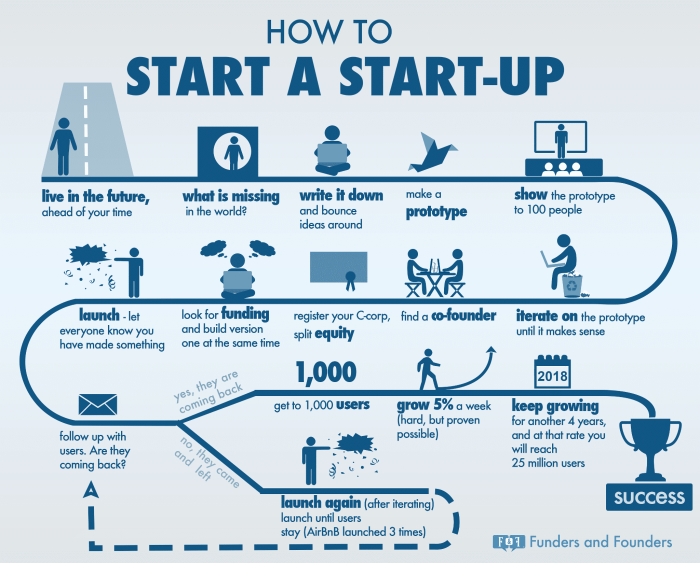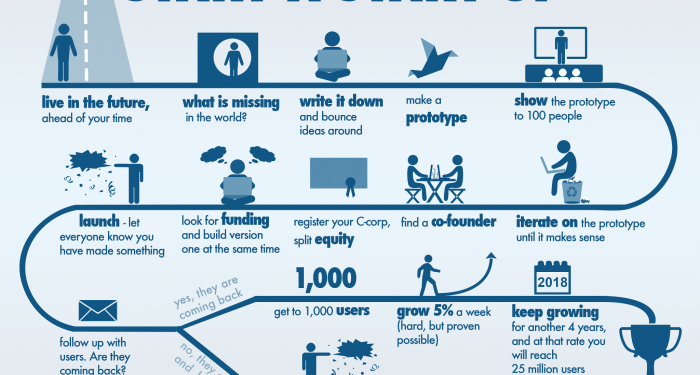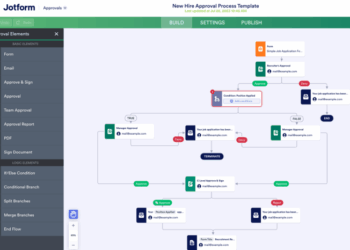Embarking on the journey of starting a profitable startup business in 2025 requires strategic planning, innovative ideas, and a keen eye on market trends. This guide dives into key aspects like research, business model development, funding, marketing, product innovation, team building, and leadership.
Let's explore the roadmap to success in the upcoming business landscape.
Research and Planning
Research and planning are crucial steps in starting a profitable startup business in 2025. By identifying emerging trends and markets, exploring innovative business ideas, and analyzing potential competitors, you can position your business for success in the future.
Identifying Emerging Trends and Markets
- Stay updated on industry reports, market research, and technological advancements to identify emerging trends.
- Look for opportunities in growing sectors such as sustainability, healthcare technology, and artificial intelligence.
- Consider the impact of global events, regulations, and consumer behavior on future market trends.
Exploring Innovative Business Ideas
- Brainstorm unique business concepts that cater to future demands and solve upcoming challenges.
- Focus on niche markets or underserved segments to stand out from competitors.
- Utilize emerging technologies like blockchain, virtual reality, or automation to create innovative solutions.
Analyzing Potential Competitors and Gaps in the Market
- Research existing competitors to understand their strengths, weaknesses, and market positioning.
- Identify gaps in the market where your business can offer a unique value proposition or disrupt traditional industries.
- Utilize SWOT analysis to assess your competitive advantage and develop a strategic plan for growth.
Business Model Development
When starting a profitable startup business in 2025, it is crucial to design a scalable business model that can support future growth. This involves determining revenue streams, pricing strategies, and incorporating technology for efficiency and competitiveness.
Designing a Scalable Business Model
A scalable business model is essential for long-term success. It allows the business to grow without being hindered by limitations in its structure or operations. To design a scalable business model, consider the following:
- Identify your target market and analyze their needs and preferences.
- Develop products or services that can be easily scaled to meet increasing demand.
- Build a strong infrastructure that can support growth without significant additional costs.
- Implement processes that can be automated to increase efficiency as the business expands.
Determining Revenue Streams and Pricing Strategies
Revenue streams and pricing strategies play a crucial role in the profitability of a startup business. It is important to diversify revenue streams and set competitive prices to attract and retain customers. Consider the following when determining revenue streams and pricing strategies:
- Offer different pricing tiers to cater to various customer segments.
- Consider subscription-based models or one-time purchase options.
- Implement upselling and cross-selling strategies to increase customer lifetime value.
- Regularly review and adjust pricing strategies based on market trends and competition.
Incorporating Technology for Efficiency and Competitiveness
Technology can be a powerful tool for improving efficiency and staying competitive in the market. By incorporating the right technology solutions, startups can streamline their operations, enhance customer experiences, and differentiate themselves from competitors. Consider the following ways to incorporate technology:
- Utilize data analytics to gain insights into customer behavior and market trends.
- Implement cloud-based solutions for flexible and scalable operations.
- Integrate AI and automation tools to streamline processes and reduce manual tasks.
- Invest in cybersecurity measures to protect sensitive business and customer data.
Funding and Investment
Securing funding is crucial for the success of your startup business. Here, we will explore different funding options and strategies to attract potential investors.
Exploring Funding Options
When it comes to funding your startup, there are various options to consider:
- Venture Capital:Venture capital firms invest in startups with high growth potential in exchange for equity. They often provide not only funding but also mentorship and expertise.
- Angel Investors:Angel investors are individuals who invest their own money into startups in exchange for ownership equity. They can offer valuable insights and connections.
- Crowdfunding:Crowdfunding platforms allow you to raise funds from a large number of people who each contribute a small amount. This can help validate your idea and attract early customers.
Developing a Financial Plan
Creating a comprehensive financial plan is essential to understand your startup costs, operations, and potential for growth. This plan should include:
- Startup Costs:Calculate all expenses involved in launching your business, including equipment, marketing, and legal fees.
- Operating Expenses:Estimate your monthly costs such as rent, salaries, utilities, and supplies.
- Revenue Projections:Forecast your sales and revenue based on market research and realistic assumptions.
Attracting Investors and Securing Funding
To attract potential investors and secure funding for your startup, consider the following strategies:
- Build a Strong Pitch:Craft a compelling pitch that clearly explains your business idea, target market, and revenue potential.
- Network Effectively:Attend networking events, pitch competitions, and industry conferences to connect with potential investors.
- Show Traction:Demonstrate early traction or customer interest to prove the viability of your business.
- Seek Strategic Partnerships:Partner with other businesses or organizations that can provide funding or resources to help your startup grow.
Marketing and Customer Acquisition
In today's digital age, having a robust marketing strategy is crucial for the success of any startup business
Create a Strong Online Presence
- Invest in a user-friendly website that reflects your brand identity and values.
- Optimize your website for search engines () to improve visibility and attract organic traffic.
- Utilize social media platforms like Instagram, Facebook, and Twitter to engage with your target audience and promote your products or services.
Define Target Customer Segments
- Conduct market research to identify your target customer segments based on demographics, psychographics, and behavior patterns.
- Create buyer personas to understand the needs, preferences, and pain points of your target customers.
Develop a Customer Acquisition Plan
- Implement a multi-channel approach to reach your target customers through various touchpoints.
- Offer incentives such as discounts, promotions, or referral programs to encourage customer acquisition and retention.
- Track and analyze customer acquisition metrics to optimize your marketing efforts and improve ROI.
Build Brand Awareness and Attract Customers
- Collaborate with influencers or brand ambassadors to reach a wider audience and build credibility.
- Organize events, webinars, or workshops to showcase your expertise and connect with potential customers.
- Create engaging content such as blogs, videos, or podcasts to educate and entertain your audience while promoting your brand.
Product Development and Innovation
In order to create a successful startup business in 2025, it is crucial to focus on product development and innovation. This involves creating a product roadmap that emphasizes differentiation and staying ahead of the competition. User feedback and iteration play a key role in refining the product to meet customer needs and preferences.
Product Roadmap with Innovation and Differentiation
Developing a product roadmap that prioritizes innovation and differentiation is essential for the success of a startup. By identifying unique features and functionalities that set your product apart from competitors, you can attract and retain customers. This roadmap should Artikel key milestones, timelines, and resources needed to bring these innovative ideas to life.
- Conduct market research to identify gaps and opportunities for innovation.
- Collaborate with cross-functional teams to brainstorm and prioritize innovative features.
- Implement agile development methodologies to quickly iterate and test new ideas.
- Leverage technology trends and advancements to stay ahead of the curve.
Importance of User Feedback and Iteration
User feedback is invaluable in product development as it provides insights into customer preferences and pain points. By collecting and analyzing feedback from early adopters and beta testers, startups can iterate on their product to enhance usability and functionality. This iterative process allows for continuous improvement based on real-world usage and feedback.
"Listening to your users is the most effective way to innovate and create a product that meets their needs."
Strategies for Continuous Innovation
Staying ahead of the competition requires a commitment to continuous innovation. Startups can achieve this by fostering a culture of experimentation and creativity within the organization. Encouraging employees to think outside the box and explore new ideas can lead to breakthrough innovations that set your product apart in the market.
- Invest in research and development to explore emerging technologies and trends.
- Build partnerships with industry experts and thought leaders to gain insights and inspiration.
- Regularly review and update your product roadmap to incorporate new ideas and feedback.
- Stay agile and adaptable to pivot quickly in response to market changes and customer demands.
Team Building and Leadership

Building a strong and effective team is crucial for the success of a startup. Each team member plays a vital role in driving the business forward, and a well-defined structure of roles and responsibilities is essential to ensure smooth operations.
Roles and Responsibilities
- Founder/CEO: Sets the vision and direction of the startup, makes key decisions, and oversees the overall operations.
- CTO/Head of Technology: Responsible for the technical aspects of the product or service, leading the development team.
- CMO/Head of Marketing: Develops and executes marketing strategies to acquire and retain customers.
- CFO/Head of Finance: Manages the financial aspects of the business, including budgeting, forecasting, and financial planning.
- COO/Head of Operations: Ensures smooth day-to-day operations, manages resources, and optimizes processes.
- Product Manager: Coordinates product development, gathers customer feedback, and prioritizes features.
Recruiting Top Talent and Work Culture
Recruiting top talent starts with a clear understanding of the skills and qualities needed for each role. Utilize online platforms, industry networks, and referrals to reach potential candidates. Fostering a positive work culture involves promoting open communication, providing growth opportunities, and recognizing achievements.
Leadership Styles
- Transformational Leadership: Inspires and motivates team members, encourages innovation, and fosters a collaborative environment.
- Servant Leadership: Focuses on serving the team, prioritizing their needs, and empowering individuals to reach their full potential.
- Democratic Leadership: Involves team members in decision-making processes, promoting inclusivity and valuing diverse perspectives.
End of Discussion
In conclusion, starting a profitable startup business in 2025 demands a blend of vision, adaptability, and relentless innovation. By staying ahead of trends, engaging with customers, and fostering a strong team, you can pave the way for success in the dynamic business world of tomorrow.
FAQ
What are some common funding options for startup businesses in 2025?
In 2025, startup businesses can explore funding from sources like venture capital firms, angel investors, or through crowdfunding platforms to kickstart their ventures. Each option comes with its own set of benefits and considerations.
How important is user feedback in product development for startups in 2025?
User feedback is crucial for startups in 2025 as it provides valuable insights for refining products, enhancing user experience, and staying competitive in the market. By incorporating feedback loops, startups can iterate and improve their offerings effectively.
What role does digital marketing play in the success of startup businesses in 2025?
Digital marketing is essential for startup businesses in 2025 to reach a wider audience, build brand awareness, and engage with customers in an increasingly digital world. Leveraging digital channels and social media platforms can significantly impact the growth and visibility of a startup business.













